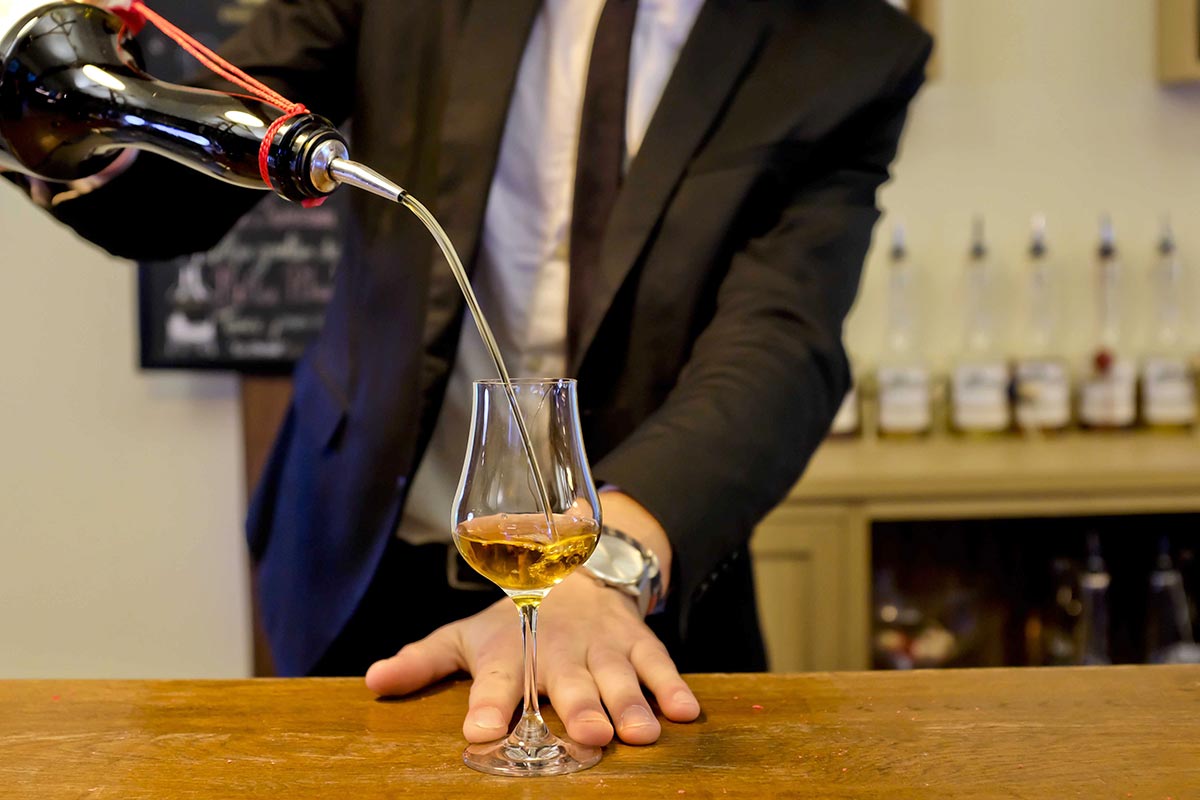
Image Source – Google
Calvados apple brandy is a traditional French spirit that has been produced for centuries in the picturesque region of Normandy. Made from a blend of specially selected apples, this artisanal brandy is renowned for its rich flavors and complex aromas. The production process of Calvados is steeped in tradition, with each step carefully crafted to create a high-quality and unique spirit. Let's take a closer look at the artisanal process of making Calvados apple brandy, from orchards to bottles.
The Orchards: Growing the Perfect Apples
One of the key ingredients in Calvados apple brandy is, of course, the apples. The region of Normandy is known for its fertile soil and temperate climate, which are ideal conditions for growing a variety of apple trees. To produce the best apples for Calvados, orchard owners carefully select specific apple varieties known for their flavor profiles and qualities that are suited for distillation.
Key points about the orchards:
- Orchards in Normandy are often planted on sloping hillsides to maximize sun exposure and drainage.
- Popular apple varieties used in Calvados production include bitter, sweet, and bittersweet apples.
- Apples are hand-picked at peak ripeness to ensure the best flavor and sugar content.
The Fermentation Process: Transforming Apples into Cider
Once the apples are harvested, they are washed, crushed, and pressed to extract the juice. This fresh apple juice is then fermented to convert the sugars into alcohol. The fermentation process is crucial in developing the unique flavors and characteristics of Calvados apple brandy.
Key steps in the fermentation process:
- Yeast is added to the apple juice to kickstart fermentation.
- The fermented apple juice, also known as cider, is left to mature for several weeks to develop complex flavors.
- Temperature control is essential during fermentation to ensure a consistent and high-quality product.
The Distillation Process: Crafting the Spirit
After the cider has fermented, it is ready to be distilled. The distillation process is where the alcohol content of the cider is increased, and the flavors are concentrated. Traditional copper pot stills are commonly used in Calvados production to distill the cider into a clear spirit known as eau-de-vie.
Key aspects of the distillation process:
- Double distillation is often used to create a smoother and more refined spirit.
- The eau-de-vie is then aged in oak barrels to develop its character and flavors.
- The aging process can take several years, with some Calvados brands offering vintage expressions that have been aged for decades.
The Blending and Bottling: Creating a Harmonious Spirit
Once the eau-de-vie has matured to perfection, the master blender steps in to create the final product. Blending different aged spirits together is a delicate art form that requires skill and experience to achieve a harmonious balance of flavors. The blended Calvados is then bottled and labeled, ready to be enjoyed by consumers around the world.
Key points about blending and bottling:
- Master blenders use their expertise to create consistent flavor profiles across different batches.
- Calvados is often bottled at varying strengths, ranging from 40% to 50% alcohol by volume.
- The final product may be labeled as Fine, VSOP (Very Superior Old Pale), or XO (Extra Old) depending on the aging period.
In Conclusion
The artisanal process of making Calvados apple brandy is a labor of love that requires patience, skill, and a deep respect for tradition. From the carefully tended orchards to the expertly crafted spirits, every step in the production of Calvados contributes to the rich history and unique flavors of this French apple brandy. So, the next time you raise a glass of Calvados, savor the craftsmanship and dedication that went into creating this exceptional spirit.
+ There are no comments
Add yours